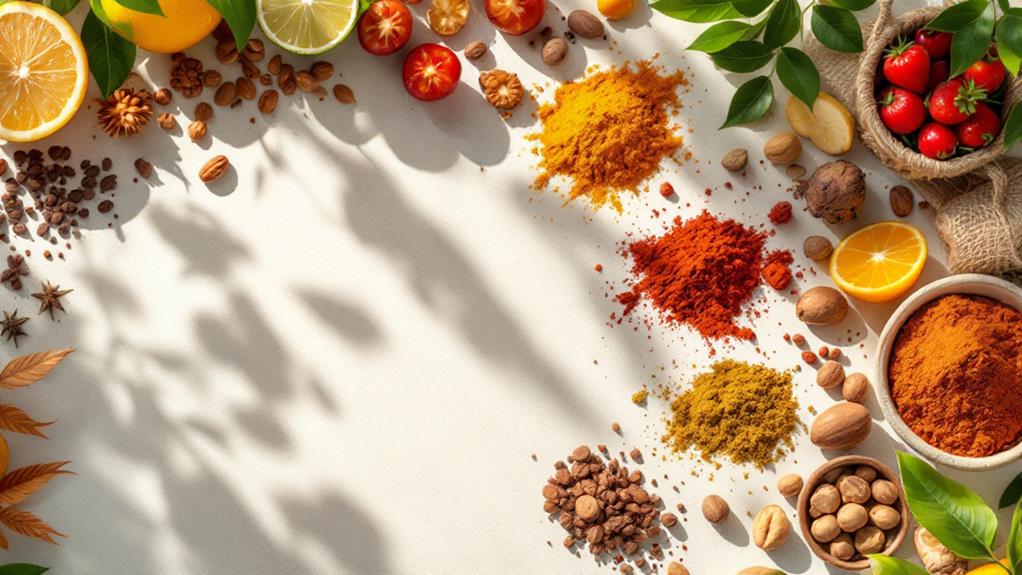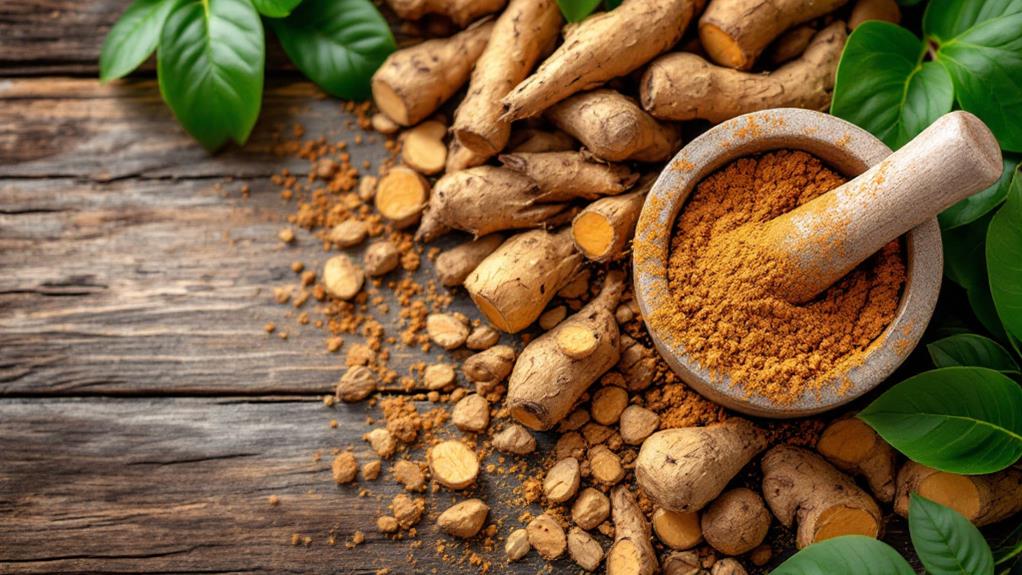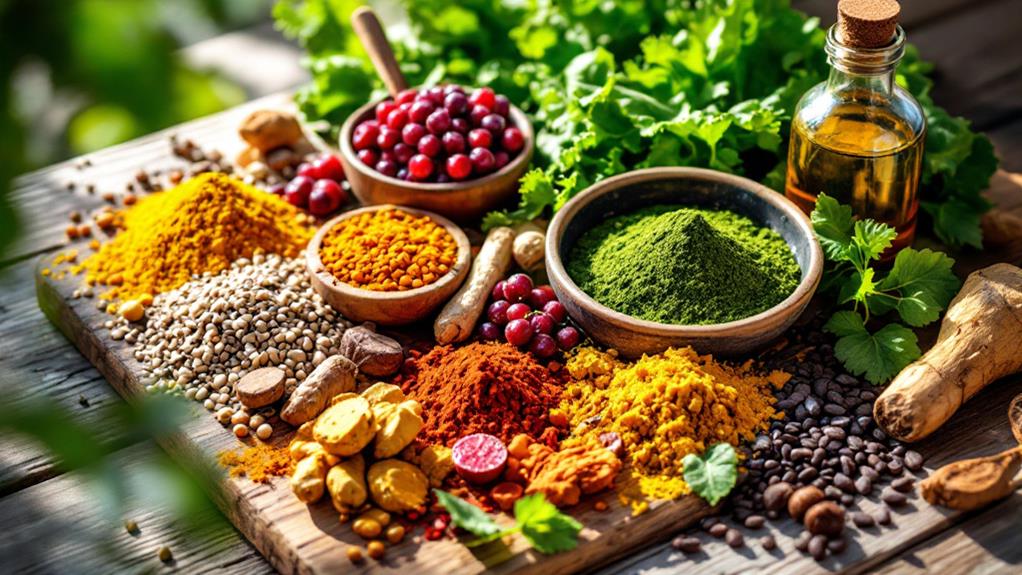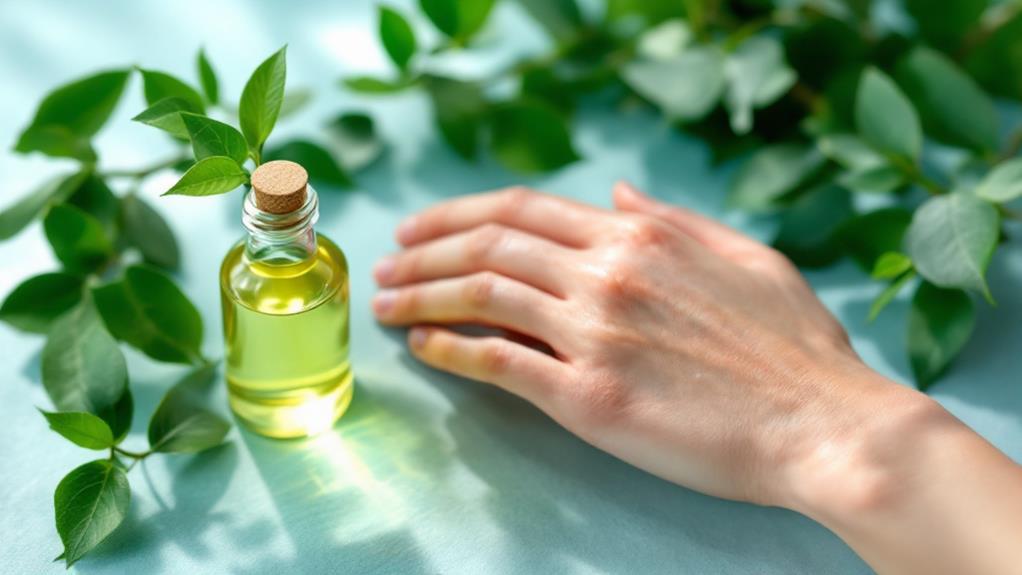The Ultimate Guide to Sea Salt: From the Ocean to Your Table
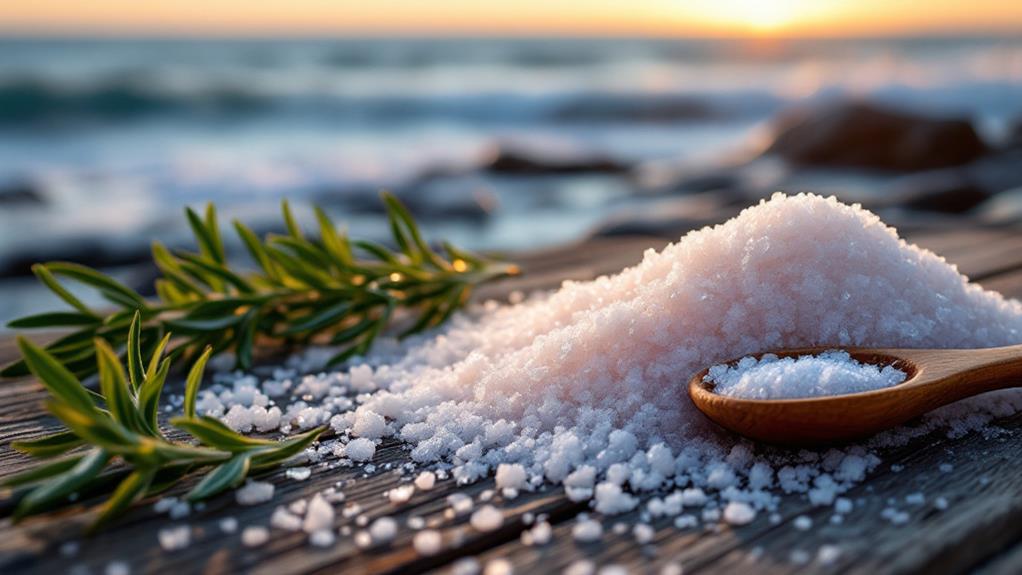
Unearth the fascinating expedition of sea salt from ocean to table and reveal its many benefits. It supports nerve function, hydration, and offers a unique flavor to your dishes. Start by collecting clean seawater at low tide, always aiming for purity. After filtering, let the evaporation and crystallization process unfold gently in your kitchen. Harvest and store your handcrafted sea salt, embracing traditional methods that connect you with nature's bounty. Different salts—sea, table, and kosher—bring distinct culinary experiences to life. If you're curious about enriching your culinary creations with sea salt's textures and flavors, there's more to investigate.
Understanding Sea Salt's Benefits
In relation to understanding sea salt's benefits, it's clear that this mineral is more than just a seasoning. Sea salts offer a variety of health advantages that table salt simply can't match. For starters, sea salt is essential in nerve impulse transmission and muscle contraction, making it indispensable for your body's daily functions. Unlike regular table salt, sea salts contain trace minerals such as magnesium and potassium, which not only improve flavor but also contribute greatly to overall health.
These minerals play a role in maintaining proper fluid balance within your body, ensuring you stay hydrated and well. This is important for your complete well-being, as fluid balance affects everything from energy levels to organ function. Additionally, sea salt's natural preservative qualities make it effective for salt preservation, extending the shelf life of foods and maintaining their freshness.
The handcrafted production process of sea salts allows for a unique customization in both flavor and texture. This results in a fresher, more lively seasoning option compared to heavily processed table salt. Embracing sea salts in your diet not only boosts your culinary experiences but also supports your health in a more holistic way.
Collecting Seawater Safely
Gathering seawater safely is important for creating high-quality sea salt, ensuring that the salt you produce is both pure and healthy. Start by collecting seawater during low tide when the concentration of salt is ideal, and access is easier. Aim to gather about two gallons of seawater, which will yield approximately 1¼ cups of salt. The choice of location is critical; always opt for unpolluted coastal regions. This guarantees that the seawater is free from industrial pollutants and sewage, maintaining water purity.
To execute this task effectively, follow these steps:
- Choose the Right Location: Avoid areas near industrial sites or sewage outlets. If ocean conditions are hazardous, collect from safer alternatives like Alsea Bay, which provides reliable water purity.
- Use Appropriate Containers: Carry clean, food-grade plastic containers or glass jugs for collecting seawater. These materials help preserve the water's cleanliness and prevent contamination.
- Initial Filtration: Before evaporation, filter the collected seawater using coffee filters to remove any debris or contaminants. This step is crucial for ensuring that the final salt product remains pure.
Filtering and Preparing Seawater
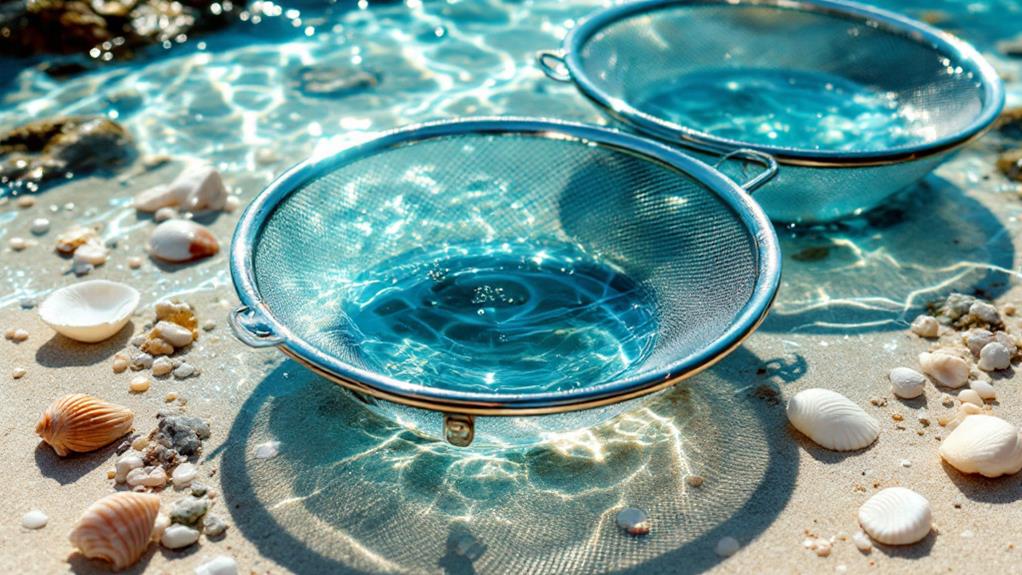
Filtering the seawater is a vital step in preparing it for salt production. Before you start, make certain you've collected the seawater from clean, unpolluted areas, steering clear of industrial sites or sewage outlets. This choice guarantees the quality of your salt won't be compromised by contaminants that could affect flavor and purity.
To begin the filtering process, use a simple coffee filter. Hold it over a stockpot and pour the seawater through, allowing the filter to catch sand, debris, and other impurities. This step is significant for achieving a cleaner salt product. Properly filtered seawater sets the stage for high-quality salt, as removing contaminants assures that the final product remains pure.
Bear in mind that you'll need about two gallons of seawater to yield approximately 1¼ cups of sea salt after the evaporation process. By carefully filtering the seawater, you confirm that the resulting salt is not only safe but also tastes great. Remember, the quality of your seawater directly impacts the quality of your sea salt, making filtering an indispensable part of the preparation. Taking the time to filter correctly will reward you with exceptional results.
Evaporation and Crystallization Process
The magic of transforming seawater into sea salt begins with the evaporation process. You start by gently heating filtered seawater in a large pot. The goal is to evaporate the water, removing about three-quarters of its volume. This step concentrates the salt and sets the stage for the formation of salt crystals. As the water level drops, you must stir frequently. This prevents scorching and guarantees the salt crystals form evenly. Stirring is key to making salt that's uniform and of good quality.
In the final stage of the evaporation process, reduce the heat to low. Continue stirring until the remaining salt resembles table salt in texture. This gradual process allows the salt crystals to fully develop without burning. Once you've evaporated all the water, scrape the salt crystals from the pot. You may briefly rinse them in fresh water to remove any impurities.
For the final drying step:
- Transfer the harvested salt to a shallow dish.
- Make sure it dries completely, so it's moisture-free.
- Confirm it's ready for storage in an airtight container.
This careful process results in pure, flavorful sea salt ready for your table.
Harvesting and Storing Your Salt
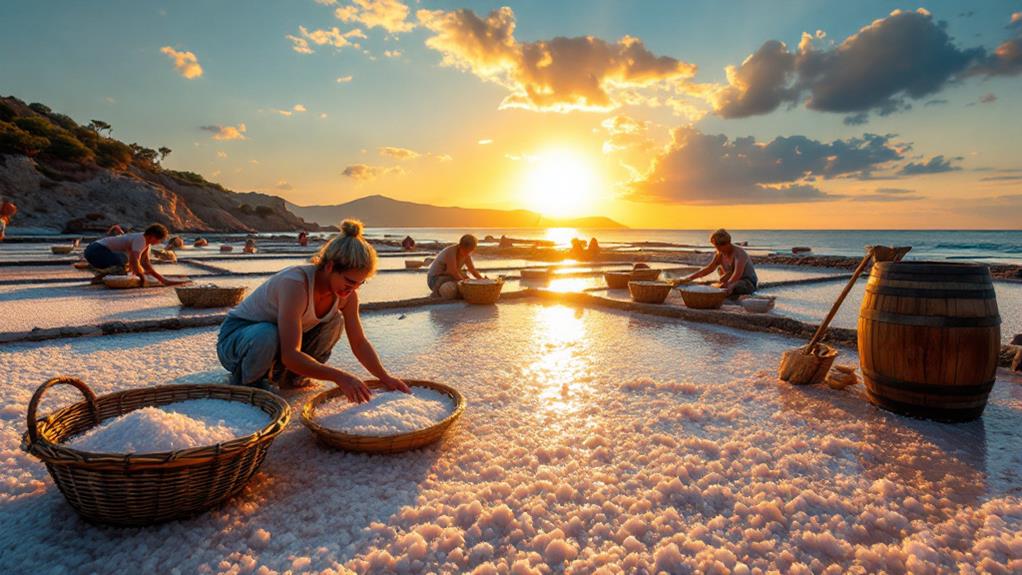
Once you've successfully crystallized your sea salt, it's time to harvest and store it properly to maintain its quality. Start by collecting clean sea water during low tide using food-grade containers. Verify the water's free from debris and contaminants to achieve the best possible salt quality. After boiling the sea water, scrape the crystallized salt from the pot and use a fine mesh strainer to separate larger pieces. This step is essential for refining your harvest.
Next, give your harvested salt a quick rinse in fresh water. This helps remove any lingering impurities. Spread the salt evenly on a baking sheet, allowing it to dry completely. This guarantees that your sea salt is ready for long-term storage.
When it comes to storing your homemade sea salt, use airtight containers. This is critical to prolong its shelf life. Thanks to its high salt concentration, your sea salt naturally resists bacterial growth, making it a sustainable seasoning option. Properly stored, your sea salt can last indefinitely, offering a cost-effective choice for enhancing your culinary creations. Enjoy the satisfaction of using your own harvested salt in the kitchen!
The Rich History of Salt
When you investigate the rich history of salt, its profound impact on human civilization becomes immediately apparent. Salt's path as a valuable commodity dates back to 6,000 BC. It helped shape ancient societies by playing a vital role in trade and economy. The word "salary" itself is derived from the Latin "salarium," reflecting salt's importance in the Roman Empire where soldiers were often paid with it. This illustrates how valuable salt was, not just for flavoring food, but as a form of currency and trade.
Consider these significant historical roles of salt:
- Economic Influence: Salt was fundamental in building economies, with many cities founded along salt trade routes. These routes facilitated commerce and cultural exchanges across continents, deeply influencing economic development.
- Food Preservation: In ancient times, salt's ability to preserve food was imperative. In places like Newfoundland and Labrador, salt was vital for preserving cod, ensuring that food could be stored and transported over long distances.
- Cultural Significance: Civilizations like the Romans relied heavily on salt, integrating it into their daily lives and culinary practices. Salt's ubiquitous presence in commerce and cooking underscores its irreplaceable value throughout history.
Traditional Sea Salt Production
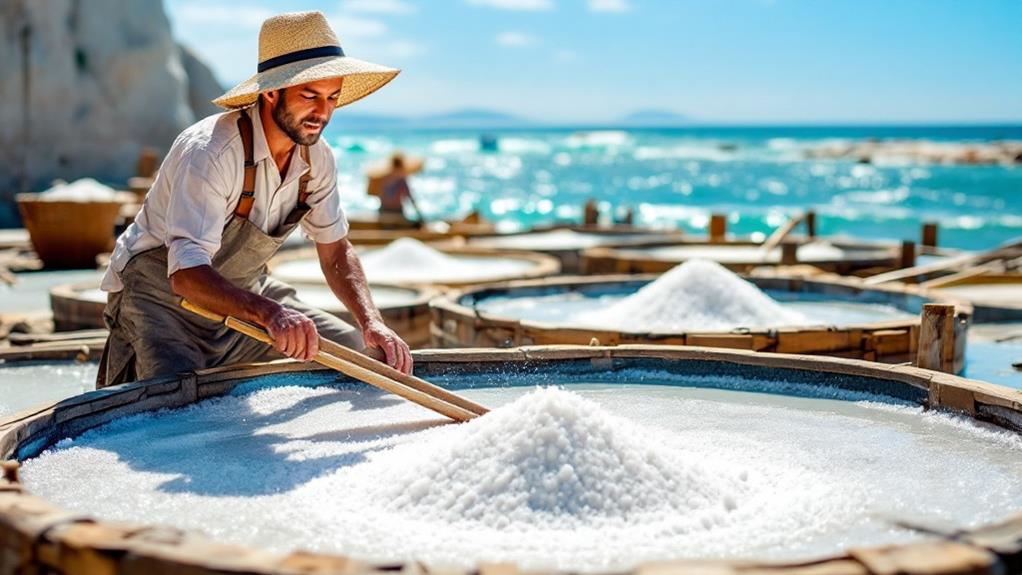
Exploring traditional sea salt production reveals a fascinating world where nature and human ingenuity come together. This ancient practice relies on solar evaporation, a simple yet effective method that thrives in warm climates with high evaporation rates. By using clean seawater, you can expect to derive roughly one pound of salt from every four gallons of seawater. This time-honored technique dates back to at least 6,000 BC, where it served essential roles in trade, preservation, and culinary applications.
When you investigate artisanal techniques, you'll uncover methods like those employed by producers of Maldon Sea Salt. These involve hand-harvesting seawater and directing it into shallow pools. Here, the sun and wind work their magic, concentrating the brine until salt crystals form. It's a method that emphasizes patience and a profound connection with the environment.
The end product is not merely salt; it's a reflection of its origins. With unique textures and flavors, each batch offers a distinct taste, influenced by the mineral content of the seawater and surrounding environmental factors. This individuality is what makes traditional sea salt production so enthralling and cherished by culinary enthusiasts worldwide.
Comparing Salt Varieties
Submerge yourself in the world of salt varieties, and you'll uncover a tapestry of flavors and textures that improve any dish. Each type of salt brings its own character to the table, and understanding their differences can raise your culinary creations.
- Sea Salt: Derived from evaporated seawater, sea salt boasts trace minerals that enrich both flavor and color. Unlike table salt, which is mined and heavily processed, sea salt retains these natural elements. Variants like Maldon sea salt offer unique pyramid-shaped flakes, delivering a distinct texture and clean taste.
- Table Salt: Nearly 100% sodium chloride, table salt undergoes extensive refining, stripping it of the trace minerals found in sea salt. Its fine, uniform grains make it a staple for general cooking, yet it lacks the lively flavor profile sea salt provides.
- Kosher Salt: Known for its large, irregular flakes, kosher salt dissolves quickly and is perfect for seasoning meat. While it shares the mineral simplicity of table salt, its texture makes it a versatile choice in the kitchen.
Creative Culinary Uses
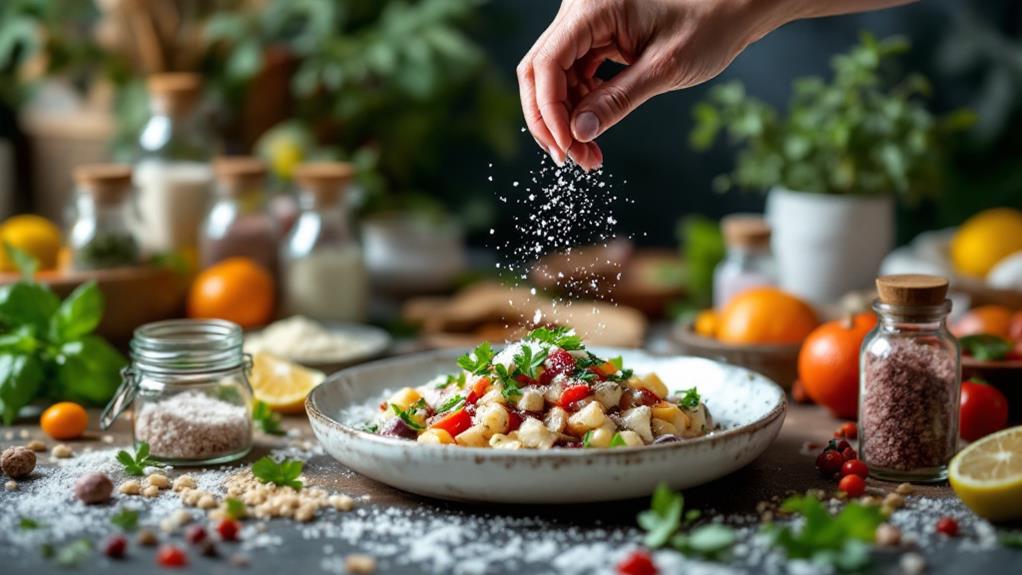
Release the full potential of sea salt by incorporating it creatively into your culinary endeavors. Using sea salt as a finishing salt can transform your dishes, adding a burst of flavor and texture that raises your dining experience. When sprinkled over a dish just before serving, it improves the vibrancy and provides a delightful crunch. The natural minerals from ocean water, like magnesium and potassium, impart subtle flavors that conventional table salt can't match, making sea salt a gourmet favorite.
Consider experimenting with infused sea salts. By combining salt with herbs, spices, or citrus, you can create unique flavor profiles that diversify your spice collection. Imagine a rosemary-infused sea salt enriching roasted vegetables or a citrus-infused version adding zing to grilled fish. These creative blends offer endless possibilities for your kitchen repertoire.
In baking, a pinch of sea salt can balance sweetness and intensify flavors. Its coarse texture not only adds a pleasing crunch but also creates a beautiful contrast in cookies and caramel-topped desserts. By adjusting evaporation times of ocean water, you can tailor the texture of your sea salt, ensuring it's perfect for every dish you craft.
Tips for Homemade Sea Salt
If you've ever wondered how to make your own sea salt, the process is both rewarding and straightforward. To start, you'll need clean, unpolluted seawater, ideally collected during low tide. This guarantees a high-quality product, similar to what you'd find in a rock salt store. Typically, two gallons of seawater will yield about 1¼ cups of salt.
Here's a simple guide to sea salt production:
- Filter the Seawater: Pour the collected seawater through coffee filters to remove sand and debris. Clean water is essential for producing quality salt crystals.
- Boil and Evaporate: Gently boil the filtered seawater, allowing about ¾ of the volume to evaporate. Reduce the heat and stir consistently to avoid scorching as the salt crystals form.
- Harvest and Dry: Once the water has fully evaporated, scrape the salt crystals from the pot. Briefly rinse them in fresh water to eliminate impurities, then spread on a baking sheet to dry completely.

